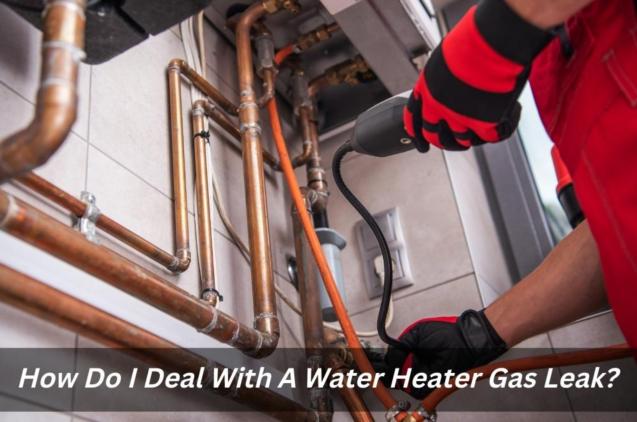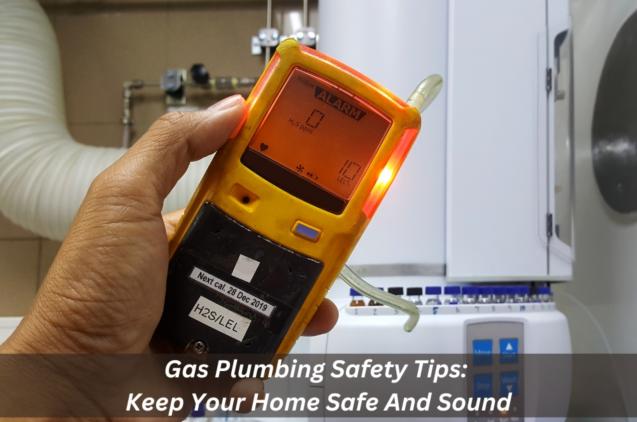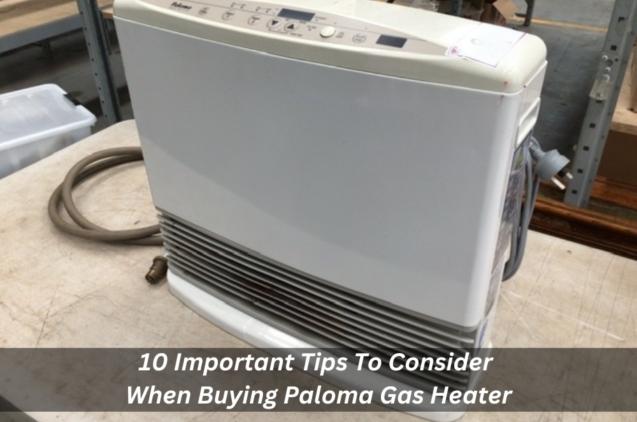
Choosing The Right Heating System For Your Home
By Apex Gas Heater Services|November 07, 2022
Do you ever wonder why some houses get cold after being heated for hours while other houses stay warm even when they stay unheated for years? Do you want to know exactly why? Read on to discover how heating systems operate and which system is better suited for your home.
We live in a climate where extreme temperatures are common and winter weather conditions can be unpredictable. In order to keep our homes comfortable year-round, our heating systems have become progressively more sophisticated over time.
From large central boilers to smaller air conditioning units, there are many options available depending on your budget and lifestyle requirements. You should always choose a reliable heating system that meets your specific needs.
The most important thing to consider before buying or installing any type of heating system is the room size of your current furnace. It may seem like a small matter but it can make a big difference as far as the cost of installation and repair goes.
If you don’t know what kind of furnace you currently have it would be best to find out before making any decisions. This will also help if you plan to replace it with an oil burner.
Even though these are cheaper than gas or propane furnaces, they require periodic maintenance which should not be ignored. With this information in hand, you can compare the costs involved with each option, including the initial purchase price and ongoing operating expenses.
If you already own a furnace you might think that you don't need to buy one because you already have one. However, if you have a gas furnace, it's probably old and may not work efficiently anymore. You may want to replace it with a newer model that uses less fuel and emits fewer pollutants.
Types of Gas Heaters
There are three types of gas heaters commonly used today: Convection, Conduction and Radiant.
How much space do you have to install this type of furnace? Which area of the country are you located in? What is your budget? Is safety important to you?
Convection heaters are sometimes referred to as "hot water heaters" They use large coils of tubing filled with hot fluid to provide heat throughout the entire building. Depending upon the diameter and length of the pipes, the amount of heat provided can vary considerably.
How To Choose A Heater
Because all gas appliances must operate within certain temperature ranges, it's important to understand the specifications of different brands of furnaces like Rheem, Vulcan, Pyrox, Paloma, a Rinnai gas heater, an Everdure gas heater, etc.
Gas leak detection is another very important aspect when choosing a new gas furnace. Natural gas supply line size and pressure are factors that will affect the cost of installation. Indoor gas pressure also affects the quality of the furnace; the higher the pressure, the better the performance.
Many manufacturers offer charts showing how much heat a particular appliance produces at various temperatures. To get an idea of the amount of heat generated by different-sized panel heaters, check the chart below for your home.
Note that the heating capacity of some models varies greatly during operation - especially when first started. Therefore, it's important to read all instructions carefully and follow them exactly before turning the furnace on.
Gas Heater Service and Maintenance Instructions
Gas heater repairs should only be handled by licensed gas fitters who are trained and qualified to perform the job. Carbon monoxide testing is very important to avoid carbon monoxide poisoning. If there are any signs of trouble call a qualified technician immediately!
This means calling a contractor who specializes in gas heating services. The installation process for gas heating equipment differs widely between manufacturers.
Some companies produce high-quality products while others make low-cost versions that are difficult to maintain. Be sure to choose a manufacturer that offers warranties on their products. Most dealers will sell replacement parts along with new pieces, but many times these parts are not the best quality.
Gas furnaces require regular servicing and repair, cleaning and maintenance to ensure proper functioning and long life. If you live in a colder climate where there is snow and ice buildup on the panels, it's necessary to keep the air filter clean and clear.
Cleaning the vent pipe helps remove debris like leaves, twigs, and other items that may block the flow of air causing problems with the unit. If you notice any unusual odours or smoke coming from the vent pipe, call a professional immediately.
Most modern gas furnaces come equipped with thermostats so they can automatically turn themselves on and off. These thermostats are very sensitive and often cause power surges if used incorrectly. In fact, some experts say that gas furnaces don't need a manual reset switch at all!
If you notice damage or deterioration, immediately stop using the equipment and notify the dealer for repair. If the problem isn't readily apparent, consult your local service gas provider for help.
We live in a climate where extreme temperatures are common and winter weather conditions can be unpredictable. In order to keep our homes comfortable year-round, our heating systems have become progressively more sophisticated over time.
From large central boilers to smaller air conditioning units, there are many options available depending on your budget and lifestyle requirements. You should always choose a reliable heating system that meets your specific needs.
The most important thing to consider before buying or installing any type of heating system is the room size of your current furnace. It may seem like a small matter but it can make a big difference as far as the cost of installation and repair goes.
If you don’t know what kind of furnace you currently have it would be best to find out before making any decisions. This will also help if you plan to replace it with an oil burner.
Even though these are cheaper than gas or propane furnaces, they require periodic maintenance which should not be ignored. With this information in hand, you can compare the costs involved with each option, including the initial purchase price and ongoing operating expenses.
If you already own a furnace you might think that you don't need to buy one because you already have one. However, if you have a gas furnace, it's probably old and may not work efficiently anymore. You may want to replace it with a newer model that uses less fuel and emits fewer pollutants.
Types of Gas Heaters
There are three types of gas heaters commonly used today: Convection, Conduction and Radiant.
- A convection heater has a set of hot plates inside its furnace unit. These plates transfer heat from the flame box to the surrounding room.
- A conduction heater is basically a metal tube filled with pellets of carbon. When the gas comes into contact with the hot surface of the tube, the carbon particles melt and release their stored energy.
- Radiant heat works by using hot gases or flames to radiate infrared rays through a material such as ceramic. As the heat travels up and down the walls, the heat penetrates the interior structure of the house.
How much space do you have to install this type of furnace? Which area of the country are you located in? What is your budget? Is safety important to you?
Convection heaters are sometimes referred to as "hot water heaters" They use large coils of tubing filled with hot fluid to provide heat throughout the entire building. Depending upon the diameter and length of the pipes, the amount of heat provided can vary considerably.
How To Choose A Heater
Because all gas appliances must operate within certain temperature ranges, it's important to understand the specifications of different brands of furnaces like Rheem, Vulcan, Pyrox, Paloma, a Rinnai gas heater, an Everdure gas heater, etc.
Gas leak detection is another very important aspect when choosing a new gas furnace. Natural gas supply line size and pressure are factors that will affect the cost of installation. Indoor gas pressure also affects the quality of the furnace; the higher the pressure, the better the performance.
Many manufacturers offer charts showing how much heat a particular appliance produces at various temperatures. To get an idea of the amount of heat generated by different-sized panel heaters, check the chart below for your home.
Note that the heating capacity of some models varies greatly during operation - especially when first started. Therefore, it's important to read all instructions carefully and follow them exactly before turning the furnace on.
Gas Heater Service and Maintenance Instructions
Gas heater repairs should only be handled by licensed gas fitters who are trained and qualified to perform the job. Carbon monoxide testing is very important to avoid carbon monoxide poisoning. If there are any signs of trouble call a qualified technician immediately!
This means calling a contractor who specializes in gas heating services. The installation process for gas heating equipment differs widely between manufacturers.
Some companies produce high-quality products while others make low-cost versions that are difficult to maintain. Be sure to choose a manufacturer that offers warranties on their products. Most dealers will sell replacement parts along with new pieces, but many times these parts are not the best quality.
Gas furnaces require regular servicing and repair, cleaning and maintenance to ensure proper functioning and long life. If you live in a colder climate where there is snow and ice buildup on the panels, it's necessary to keep the air filter clean and clear.
Cleaning the vent pipe helps remove debris like leaves, twigs, and other items that may block the flow of air causing problems with the unit. If you notice any unusual odours or smoke coming from the vent pipe, call a professional immediately.
Most modern gas furnaces come equipped with thermostats so they can automatically turn themselves on and off. These thermostats are very sensitive and often cause power surges if used incorrectly. In fact, some experts say that gas furnaces don't need a manual reset switch at all!
If you notice damage or deterioration, immediately stop using the equipment and notify the dealer for repair. If the problem isn't readily apparent, consult your local service gas provider for help.



